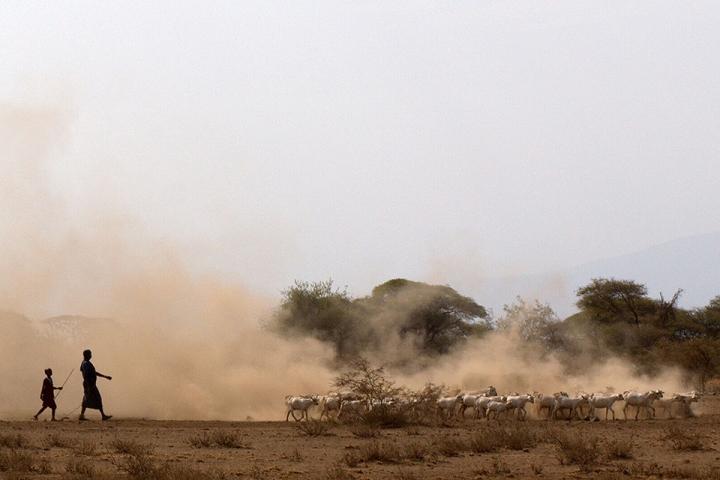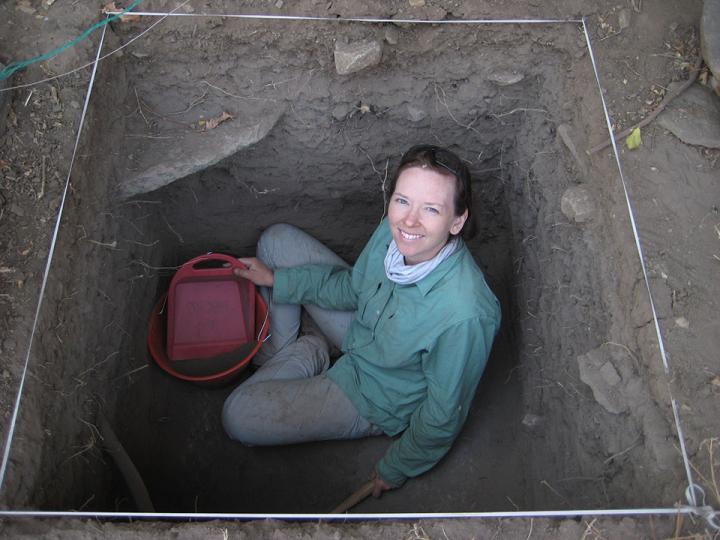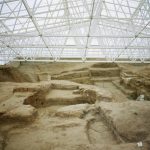Ancient DNA tells the story of the first herders and farmers in east Africa
A collaborative study that includes a SLU-Madrid archaeologist provides new insights on early human interaction

ST. LOUIS, MO (May 30, 2019) – A collaborative study led by archaeologists, geneticists and museum curators is providing answers to previously unsolved questions about life in sub-Saharan Africa thousands of years ago. The results were published online in the journal Science Thursday, May 30.
Researchers from North American, European and African institutions analyzed ancient DNA from 41 human skeletons curated in the National Museums of Kenya and Tanzania, and the Livingstone Museum in Zambia.
“The origins of food producers in East Africa have remained elusive because of gaps in the archaeological record,” said co-first author Mary Prendergast, Ph.D., professor of anthropology and chair of humanities at Saint Louis University’s campus in Madrid, Spain.
“This study uses DNA to answer previously unresolvable questions about how people were moving and interacting,” added Prendergast.
The research provides a look at the origins and movements of early African food producers.
The first form of food production to spread through most of Africa was the herding of cattle, sheep and goats. This way of life continues to support millions of people living on the arid grasslands that cover much of sub-Saharan Africa.
“Today, East Africa is one of the most genetically, linguistically, and culturally diverse places in the world,” explains Elizabeth Sawchuk, Ph.D., a bioarchaeologist at Stony Brook University and co-first author of the study. “Our findings trace the roots of this mosaic back several millennia. Distinct peoples have coexisted in the Rift Valley for a very long time.”
Previous archaeological research shows that the Great Rift Valley of Kenya and Tanzania was a key site for the transition from foraging to herding. Herders of livestock first appeared in northern Kenya around 5000 years ago, associated with elaborate monumental cemeteries, and then spread south into the Rift Valley, where Pastoral Neolithic cultures developed.
The new genetic results reveal that this spread of herding into Kenya and Tanzania involved groups with ancestry derived from northeast Africa, who appeared in East Africa and mixed with local foragers there between about 4500-3500 years ago. Previously, the origins and timing of these population shifts were unclear, and some archaeologists hypothesized that domestic animals spread through exchange networks, rather than by movement of people.
After around 3500 years ago, herders and foragers became genetically isolated in East Africa, even though they continued to live side by side. Archaeologists have hypothesized substantial interaction among foraging and herding groups, but the new results reveal that there were strong and persistent social barriers that lasted long after the initial encounters.
Another major genetic shift occurred during the Iron Age around 1200 years ago, with movement into the region of additional peoples from both northeastern and western Africa. These groups contributed to ancient ancestry profiles similar to those of many East Africans today. This genetic shift parallels two major cultural changes: farming and iron-working.
The study provided insight into the history of East Africa as an independent center of evolution of lactase persistence, which enables people to digest milk into adulthood. This genetic adaptation is found in high proportions among Kenyan and Tanzanian herders today.

###
The study was supported by funding from the Howard Hughes Medical Institute, with additional funding from the US. National Institutes of Health (5R01GM100233), Allen Discovery Center, and John Templeton Foundation, NSF Archaeometry Program, and Radcliffe Institute for Advanced Study.
Mary Prendergast, Saint Louis University; Mark Lipson, Harvard Medical School; and Elizabeth Sawchuk, Stony Brook University; are study co-first authors and David Reich, Harvard Medical School is senior author.
Other authors are: Inigo Olalde (Harvard Medical School), Christine Ogola (National Museum of Kenya), Nadin Rohland (Harvard Medical School), Kendra Sirak (Harvard Medical School), Nicole Adamski (Harvard Medical School), Rebecca Bernardos (Harvard Medical School), Nasreen Broomandkhoshbacht (Harvard Medical School), Kimberly Callan (Harvard Medical School), Brendan Culleton (Pennsylvania State University), Laurie Eccles (Pennsylvania State University), Thomas Harper (Pennsylvania State University), Ann Marie Lawson (Harvard Medical School), Matthew Mah (Harvard Medical School), Jonas Oppenheimer (Harvard Medical School), Kristin Stewardson (Harvard Medical School), Fatma Zalzala (Harvard Medical School), Stanley Ambrose (University of Illinois Urbana-Champaign), George Ayodo (Jaramogi Oginga Odinga University of Science and Technology), Henry Louis Gates Jr. (Harvard University), Agness Gidna (National Museum of Tanzania), Maggie Katongo (Livingstone Museum), Amandus Kwekason (National Museum of Tanzania), Audax Mabulla (National Museum of Tanzania), George Mudenda (Livingstone Museum), Emmanuel Ndiema (National Museum of Kenya), Charles Nelson (Western Washington University), Peter Robertshaw (California State University San Bernardino), Douglas Kennett (University of California Santa Barbara), and Fredrick Manthi (National Museum of Kenya)
Prendergast and Sawchuk published a companion piece on their work in The Conversation.
Saint Louis University
Founded in 1818, Saint Louis University is one of the nation’s oldest and most prestigious Catholic institutions. Rooted in Jesuit values and its pioneering history as the first university west of the Mississippi River, SLU offers nearly 13,000 students a rigorous, transformative education of the whole person. At the core of the University’s diverse community of scholars is SLU’s service-focused mission, which challenges and prepares students to make the world a better, more just place. For more information, visit slu.edu.
Press release from the Saint Louis University
Ancient DNA illuminates first herders and farmers in east Africa
Research summary
Genome-wide analyses of 41 ancient sub-Saharan Africans answer questions left murky by archaeological records about the origins of the people who introduced food production–first herding and then farming–into East Africa over the past 5,000 years.
Findings
Analyses suggest a multi-stage model for the spread of food production into the region known today as Kenya and Tanzania.
The introduction of herding is linked with movement into the region of two distinct groups from northeast Africa, who mixed with each other and with local hunter-gatherers.
Starting 1,200 years ago, additional people from northeastern and western Africa moved into the region and contributed genetic profiles similar to many groups living in East Africa today.
Despite great variety in pottery styles, tool materials and burial practices, Stone Age herders across East Africa were found to have closely related genomes, highlighting how cultural differences do not always map to genetic ancestry differences.
Genes for lactose digestion in adulthood were rare in the first East African herders, suggesting that as in Europe, the rise in frequency of this trait lagged behind the widespread use of cow’s milk by thousands of years.
Significance
The international study more than doubles the number of ancient genomes analyzed from sub-Saharan Africa.
The current study involved close and fully equal collaboration between archaeologists and geneticists.
Partnerships included African scientists and curators, particularly from the National Museum of Kenya, and also Henry Louis Gates, Jr. at Harvard.
The study formed the basis for the development of ethical guidelines and preservation protocols for sampling ancient DNA, published here.
Press release from Harvard Medical School



